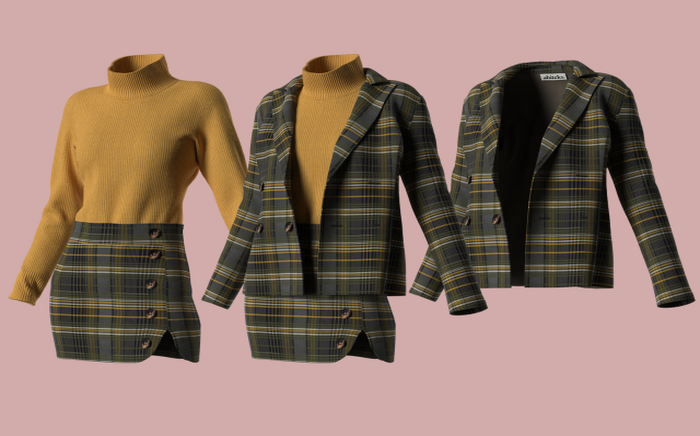Fashion and Apparel Supply Chain Management
In a competitive, fast-paced industry like apparel, supply chain management is critical. It’s the driving force behind a successful fashion season and a brand’s ability to pivot to the latest styles quickly. A strong supply chain strategy in fashion requires some special considerations because the industry has such short product lifecycles and high consumer demands.
Why Supply Chain Management Is Crucial in the Apparel Industry
Advanced supply chain management (SCM) benefits practically every industry. In apparel, where fast fashion, ever-shifting trends and micro-seasons numbering in the double digits impact the entire industry, it’s critical. Fashion retailers must carry a wide variety of products to fit many customers’ preferences. And the lightning-fast pace at which items come in and out of vogue means the industry’s product lifecycle is incredibly short. The fashion industry is constantly planning for the next season, getting new styles into production and perfecting them before the current pieces fall out of favor.
The industry also has a more complex supply chain. It includes the manufacturers creating the fibers, textiles and finished garments, which adds three links to the chain before involving wholesalers and retailers. The supply chain starts with new designs, which are then produced, distributed and sold. This added complexity requires an organized, knowledgeable logistics leader to drive new products through the supply chain and manage inventory flow throughout.
Meanwhile, consumers now demand more transparency in the supply chain. Due to labor abuses overseas, many customers look at where their clothes are produced and under what conditions. Clothing brands may work with many manufacturers to create so many unique styles in such a short time. The typical fashion brand reports between 1,000 and 2,000 suppliers, with numbers reaching 20,000 to 50,000 when including sub-suppliers.With the increased demand for 100% supply chain visibility, these companies must find a way to monitor and manage their complex supplier networks.
Demand forecasting is also challenging in the fashion industry. Since fashion trends come and go so quickly, every product at the start of the season has no sales history. Therefore, retailers can’t look at the past year’s sales numbers to determine how a product will perform. The product lifecycle is short, which means your business needs to be preparing for the next season and looking for the next big thing before their current stock goes out of style.
Meanwhile, consumer preferences are constantly in flux. Last year’s hottest trend may soon look stale and out of touch, or it could just as easily continue to rise in popularity. Trends arise out of the media, individual influencers, the economy and even the weather. For example, a rainy spring might boost outerwear sales while putting a damper on other spring arrivals.
Apparel companies need to prevent shortages and overstocked goods, which is especially important with shorter fashion seasons. Running out of an item at the wrong time can severely impact the season’s sales. Having too much leftover as new styles come into season reduces your profitability and wastes space in the retail storefront or warehouse. Effective supply chain management ensures a steady supply of product, arriving just in time to meet current demands.
Without an advanced, competent SCM structure, apparel brands and retailers struggle to meet consumer needs. Their inventory costs increase while product quality and suitability for the target customer decrease.
How Clothing Supply Chain Management Works
The apparel supply chain includes a broad network of clothing designers, fabric and finished apparel producers, transportation providers, wholesalers and direct-to-consumer retailers. It connects all the organizations involved in turning raw materials into finished garments and distributing them to customers. In the fashion industry, the supply chain breaks down into five main links:
Design: In the first step, fashion designers choose fabrics, trims, fits and finishes for clothing items and carefully plan each silhouette. They often create their own iteration of the latest trend or may create the runway looks that others want to replicate. Designers are often the ones directing the rest of their supply chain. For example, they approve the fabrics and materials manufacturers use, alongside the sellers that carry their products.
Textile manufacturing: Each garment requires raw materials. Textile producers spin, weave, blend and dye cloth and create other materials for the final product.
Apparel manufacturing: Next, garment makers cut the cloth and sew it into wearable pieces, following the patterns and designer specifications.
Distribution: Distribution in the fashion industry is complex since raw materials and finished apparel are produced worldwide and imported into key markets. Items may be shipped directly to retailers or to a distribution center that may feed multiple retailers. A well-managed supply chain includes detailed tracking, allowing brands to manage and optimize transportation and know exactly where shipments are along their routes.
End-user purchase: At the end of the supply chain, a customer purchases the item. They may buy it from a brick-and-mortar retailer, shop online or choose a “buy online pick up in-store” (BOPUS) option. For online retailers, this portion of the supply chain places greater importance on logistics and transportation management. Brick-and-mortar retailers must emphasize good sales floor and storeroom management to please in-person and BOPUS shoppers. All retailers must focus on inventory management to ensure they can sell to consumers however they prefer to shop.

 Back to Blog
Back to Blog











